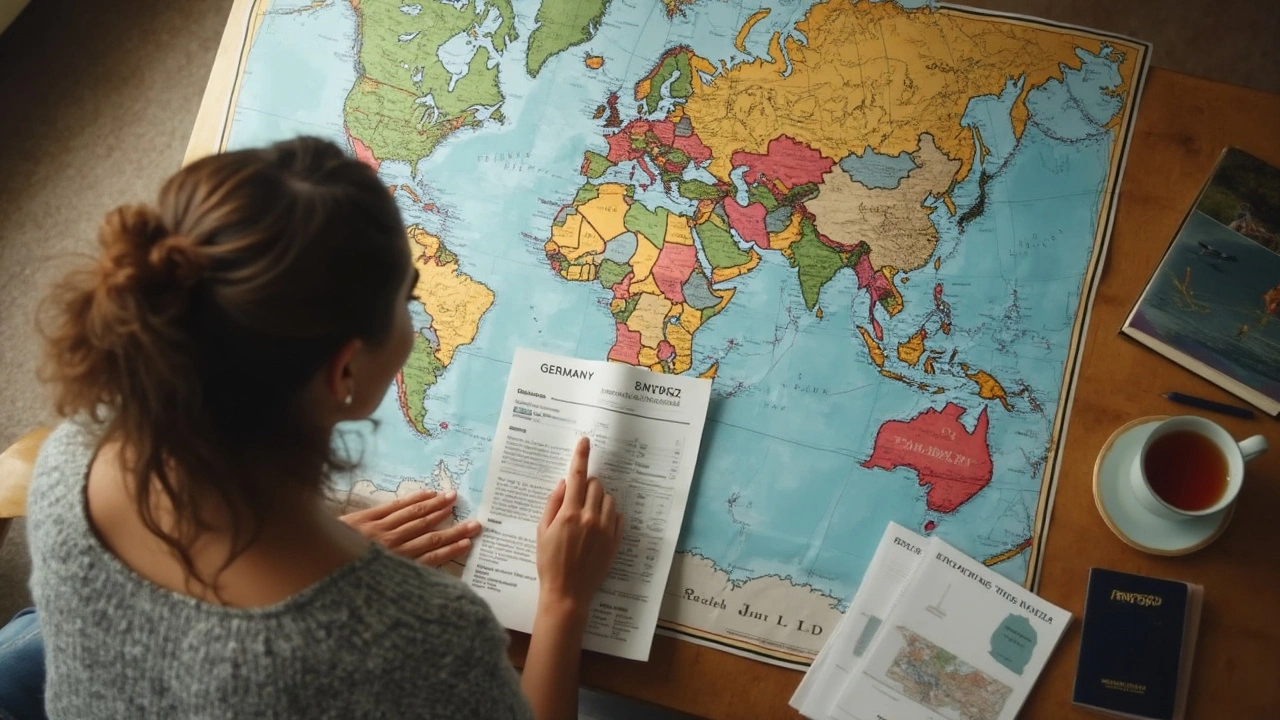 May, 27 2025
May, 27 2025
Having a facelift isn’t just about looking younger—it’s about trusting someone with your face. Safety isn’t an extra; it’s the whole point. Messed up facelifts can seriously wreck your confidence or even your health. That’s why so many people go hunting for the safest country to get work done.
If you’re thinking about booking a facelift, you want to know much more than just price tags. You want to know if surgeons really know their stuff, if the clinics are spotless, and if you’ll get backup care if anything goes wrong. It’s not just about dodging horror stories—it’s about picking a place where good results are the norm, not the exception.
Some countries get loads of buzz on Instagram, but are they really safe, or just cheap? The safest countries for facelifts have strict health rules, lots of top-rated surgeons, and clinics that know their job isn’t done until you’ve fully healed up. Knowing what to look for can save you a world of regret—so let’s get down to the stuff that actually matters for your face and your peace of mind.
- Why Safety Matters More Than Ever
- Countries That Lead in Facelift Safety
- How UK Clinics Stack Up
- Tips to Avoid Facelift Disasters
Why Safety Matters More Than Ever
The world of cosmetic surgery is booming, and facelifts are near the top of the list for people wanting to take years off their faces. But here’s the reality: not every clinic plays by the same safety rules, and as facelifts grow more popular, safety standards can get sloppy—especially where demand outpaces regulation.
Botched surgeries aren’t rare. In the UK alone, the British Association of Aesthetic Plastic Surgeons (BAAPS) reported a 44% increase in corrective procedures for facelifts gone wrong between 2022 and 2024. That means more people are fixing bad results from somewhere else. Getting a facelift in a country with sketchy safety measures can turn a simple nip-and-tuck into a life-long regret.
Why the sharp focus on safety now? Social media and medical tourism are huge. People are flying across borders to save cash, sometimes missing red flags. Every year, thousands of Brits travel abroad for cosmetic work, and the number is growing fast. But not every country has strict health inspections or requires surgeons to have proper training. That’s where things can go sideways—think infections, nerve damage, or worse.
Here’s a quick look comparing complication rates for facelifts by country:
| Country | Complication Rate (%) | Medical Regulation Level |
|---|---|---|
| UK | 2.1 | Strict |
| USA | 1.9 | Very Strict |
| Turkey | 5.4 | Moderate |
| Thailand | 4.9 | Moderate |
| Brazil | 3.7 | Strict |
Notice something? The safest country for facelifts isn’t always the one everyone talks about on social media. Lower complication rates usually show up where there’s government oversight, tough surgeon requirements, and clear rules for aftercare.
If you’re thinking about a facelift, this is why you should care about safety: protecting your health, your money, and your peace of mind. Saving a few grand upfront can cost you way more—financially, physically, and emotionally—if things don’t go as planned. And in a world where more people than ever are traveling for surgery, doing your safety homework matters now more than ever.
- Always check surgeon credentials and clinic reviews—don’t just trust the price or pretty photos.
- Look for countries or clinics with proven safety records and low complication rates.
- Read real patient stories and independent ratings, not just testimonials on fancy websites.
So don’t just ask where facelifts are cheapest—ask where they’re the safest country for facelifts. Your future self will thank you.
Countries That Lead in Facelift Safety
If we’re talking about facelift safety, three countries keep popping up: South Korea, the United States, and the UK. Each brings something a bit different to the table, but all three have earned their good reputation for strict rules and reliable results.
South Korea is basically the world’s plastic surgery hotspot. Surgeons there do a ton of facelifts every year, and clinics have to meet strict government safety checks. Many doctors even do extra years of cosmetic surgery training. Plus, South Korean hospitals use high-tech gear that helps lower infection risks and improve healing. But keep in mind, some clinics focus on speed and volume, so you still have to do your homework.
Over in the United States, the safety bar is sky-high. Clinics are watched closely by boards like the American Board of Plastic Surgery. Surgeons must keep up with the newest skills and safety updates, or they’re out. Most US clinics insist on private recovery rooms, real anesthesia teams, and full support in case of problems. The catch? The price for a facelift in the States can be double or triple what you’d pay in Asia.
Let’s not overlook the UK. It’s known for tight healthcare laws covering both private and NHS cosmetic surgery. All registered facelift surgeons must get certified by the General Medical Council. Clinics like The Cadogan Clinic in London and Manchester’s Transform Hospital Group have serious safety records, regular inspections, and transparent reviews from UK patients. If something goes wrong, backup care is never far away.
- All three—South Korea, the US, and the UK—require surgeons to be certified and clinics to be inspected regularly.
- If you want a safe country for facelifts, watch for international accreditations from groups like JCI (Joint Commission International).
- Good clinics show clear infection rates and share before-and-after photos for real patients, not just models.
Countries with the best safety records usually have higher costs and longer waiting times, but you’re paying for experience and backup if something goes sideways. Chasing the cheapest deal often means risking results you definitely don’t want.

How UK Clinics Stack Up
So, how do UK clinics compare when it comes to safe facelifts? The UK actually does pretty well. Let’s get real: surgeons here can’t just hang up a shingle and start doing faces. They need General Medical Council registration and often carry extra badges like being a member of the British Association of Aesthetic Plastic Surgeons (BAAPS). Hospitals and private clinics get inspected by the Care Quality Commission (CQC), which checks everything from patient safety to equipment sterility.
Some of the safest places for a facelift are the larger private hospitals in London, Manchester, and Birmingham. These clinics usually have plastic surgeons who are used to complicated cases and know what to do if something goes off-track. NHS hospitals also do facelifts, but they’re more likely to focus on reconstruction for medical reasons, not just appearances.
“Safety is built into the way we practise in the UK, from patient assessments to the rigorous audits clinics face every year.” — Dr. Anna Hemming, BAAPS member
One nice thing? You get actual follow-up. Aftercare isn’t just a box-tick; UK clinics do in-person checks to catch problems early. That’s genuinely rare if you go abroad. Plus, if something goes wrong, you’re covered by UK medical laws—and you can actually talk to someone in person, not just over WhatsApp.
- Regulation: Clinics must register with and are regularly inspected by the Care Quality Commission (CQC).
- Qualifications: Look for surgeons who are on the GMC’s Specialist Register for Plastic Surgery and in BAAPS or BAPRAS.
- Aftercare: Most clinics offer 24/7 contact right after surgery and several scheduled follow-ups in person.
- Transparency: You get a clear breakdown of costs, appointments, and your surgeon’s track record.
| UK Clinic Feature | What It Means for You |
|---|---|
| GMC-Registered Surgeon | Qualified, follows strict standards |
| CQC Inspection | Clinic hygiene and safety are checked |
| In-Person Aftercare | Problems are spotted and fixed early |
| Legal Protection | UK law is on your side if things go wrong |
It’s normal for UK facelift clinics to encourage a "cooling-off" period before booking, so you don’t feel rushed. That alone stops loads of bad decisions. Bottom line: the safest country for facelifts might just be your own backyard if you know what credentials to check.
Tips to Avoid Facelift Disasters
There’s nothing scarier than shelling out for a facelift and ending up with botched results—or worse, serious health issues. So how do you lower the risk and boost your chances of loving what you see in the mirror? Here’s what you need to nail down before you even book your ticket or pay a deposit.
- Do your homework on your surgeon. Check for proper medical board certification in the country you’re considering—especially if you’re going abroad. In the UK, you want a surgeon registered with the GMC and ideally a member of the British Association of Aesthetic Plastic Surgeons (BAAPS). Other countries have their own top-tier boards, so find out what the gold standard is.
- Read real reviews and look for before-and-after photos from previous patients. Social proof matters more than flashy ads. If you can’t find these, that’s a red flag.
- Ask how often the clinic handles facelifts specifically. A place that does hundreds each year is usually less risky than a clinic that dabbles in everything.
- Go through a proper face-to-face or live video consultation—do not settle for email exchanges. You want a clear explanation of risks, expected results, and the recovery plan tailored to you.
- Don’t just chase the lowest price. A super-cheap facelift often means corners are getting cut, like older equipment or less-qualified staff.
Let’s get a grip on the numbers. The risk of serious complications from facelift surgery in leading countries is well-studied. Here’s what the numbers look like, based on recent published data:
| Country | Accredited Clinics (%) | Serious Complication Rate |
|---|---|---|
| UK | 95% | Less than 1% |
| USA | 98% | 0.7% |
| South Korea | 90% | 0.8% |
| Turkey | 75% | 1.2% |
Another tip: Always double-check what post-op care looks like. The safest country for facelifts will always offer solid aftercare—think follow-up checkups, emergency contacts, and a clear plan if you need extra help. Some places let you go home right away, while others keep you overnight. Ask ahead so you’re not blindsided.
Finally, know how to spot warning signs after surgery: sudden swelling, fever, or weird pain should get checked fast. Don’t wait to call your clinic—even if you feel like you’re being dramatic. Being cautious is way better than risking long-term problems.
